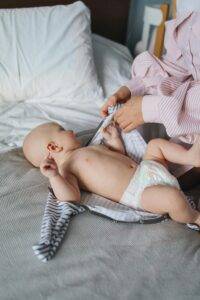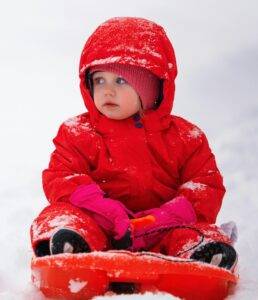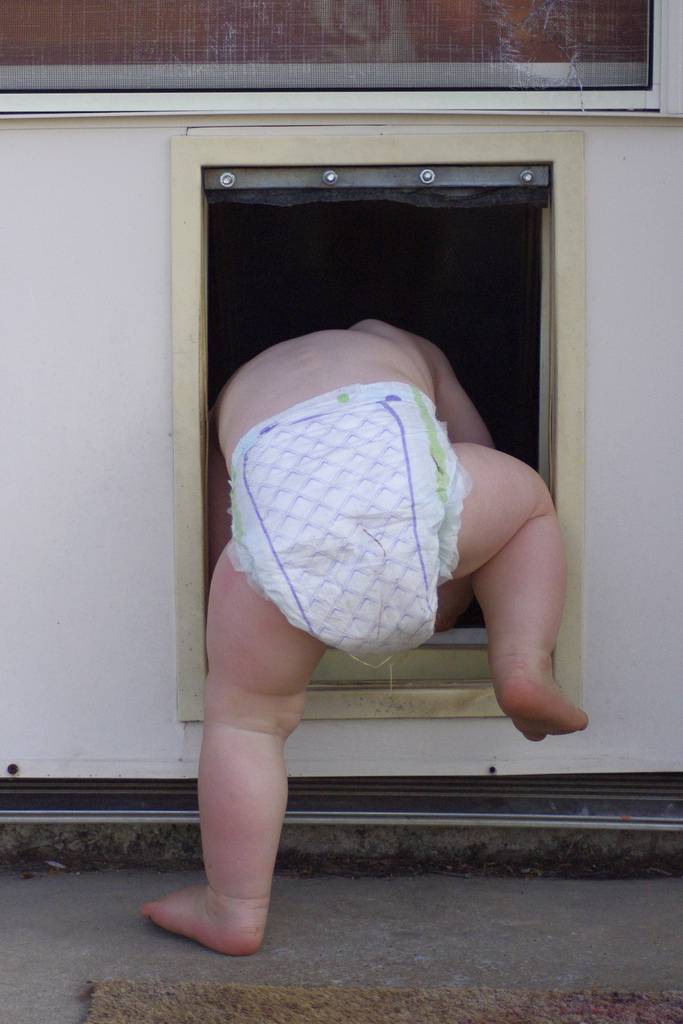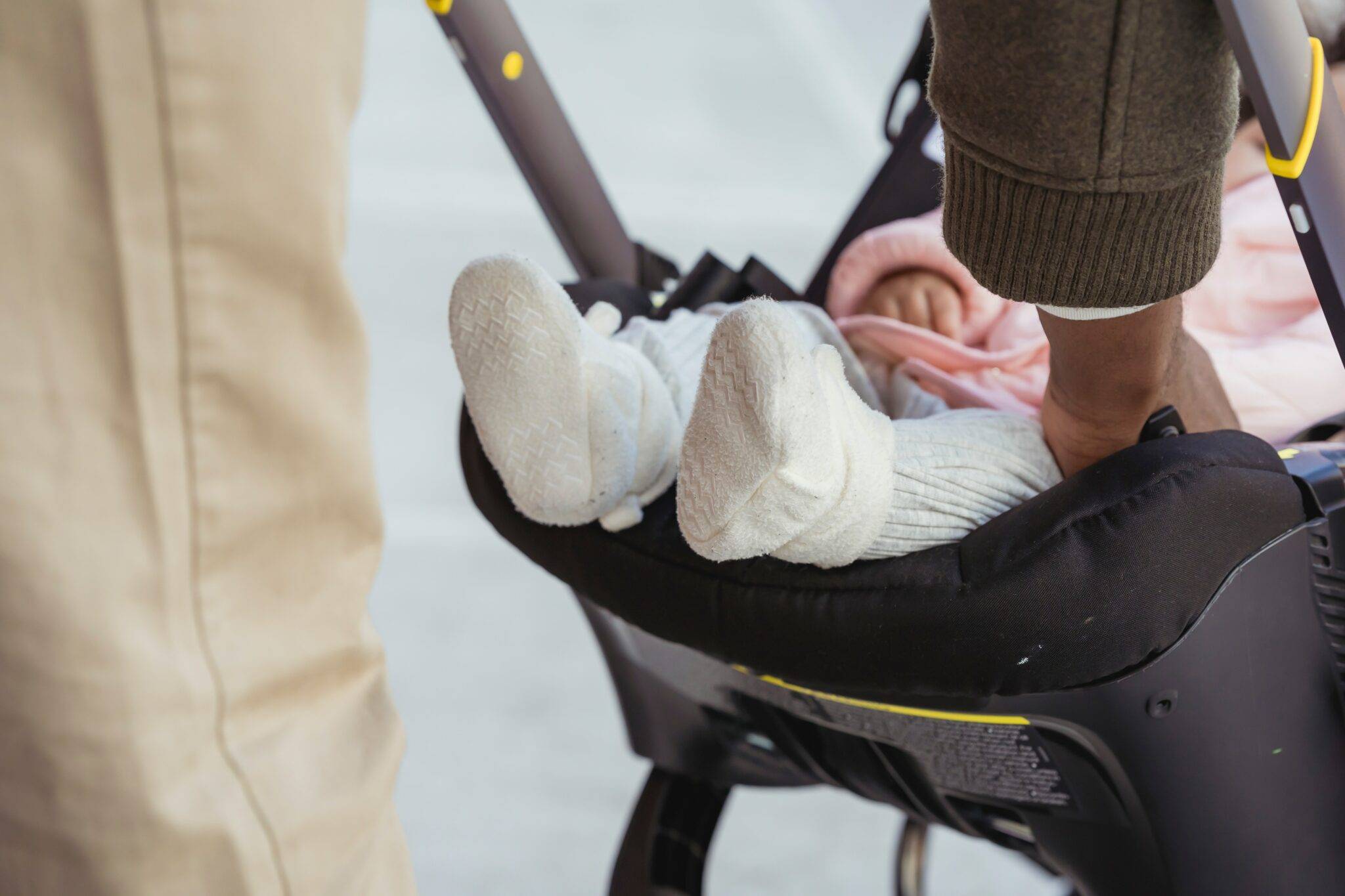Dressing your newborn baby can feel like art, especially when changing seasons, weather fluctuations, and your baby’s evolving comfort needs. As a parent, you often wonder what newborn baby wear to stay cozy and safe for each season without being overwhelmed by endless baby clothes options. This comprehensive guide covers everything you need to know about what newborn baby wear every season, from summer heat to winter chill.
What Newborn Baby Wear: It’s Important to Dress Them Properly
Newborn babies are sensitive to changes in temperature. Unlike adults, their bodies are learning to regulate temperature, making them more vulnerable to overheating or getting too cold. Dressing them appropriately keeps them comfortable and prevents common issues like overheating, heat rash, or hypothermia in extreme cases.
Moreover, selecting the right clothing prevents skin irritations and rashes, especially since newborns have sensitive skin. Whether you’re dealing with the sweltering heat of summer or the bitter cold of winter, knowing how to choose the right baby clothes is essential for their health and happiness. Now that we understand the importance of dressing your newborn, let’s explore what they should wear each season.
Spring: Dressing Your Baby for Unpredictable Weather
Spring can be a tricky season when it comes to baby clothes. The temperatures fluctuate, almost summer-like, and others remind us that winter is not far behind. Spring is the season where layering becomes your best friend. By layering, you easily add or remove clothing based on the day’s progress.
What to Dress Your Baby in During Spring
- Cotton Onesies: A cotton onesie is a great starting point. Look for breathable, lightweight materials to keep your baby comfortable throughout the day. You can choose between short-sleeve and long-sleeve onesies depending on the temperature.
- Light Jackets or Sweaters: Since spring mornings can be cool, add a light jacket or sweater over your baby’s onesie. Soft, button-up cardigans work well since they can be easily removed if the day warms up.
- Pants and Socks: Pair the onesie with cotton pants and soft baby socks. Babies’ feet get cold quickly, so ensure their toes are protected, even if it’s mild outside.
- A Light Blanket: Whether taking your baby for a stroll in the park or running errands, a lightweight, breathable blanket on hand is helpful for extra warmth.
- Soft Hats: Spring can also be breezy, so a soft hat can help protect your baby’s head and ears from the wind.
Tips for Spring Dressing
Layering is key in spring. When temperatures change suddenly, you can quickly add or remove a layer of clothing. Cotton is an excellent fabric choice during this time because it’s breathable and soft on your baby’s sensitive skin. Even though it might feel warm during the day, evenings can still get chilly, so carry an extra layer for later use.
Common Mistakes to Avoid in Spring
- Overdressing: It can be tempting to bundle your baby up, especially if it starts cool in the morning. However, overdressing can cause your baby to overheat later in the day when temperatures rise.
- Heavy Winter Clothes: To keep your baby warm, it’s easy to fall into the trap of using winter clothing during chilly spring days. Heavy fabrics can make your baby too hot. Stick with light, breathable layers instead.
By taking a layered approach to your baby’s spring wardrobe, you can keep them comfortable as the weather shifts from cool mornings to warmer afternoons.
Summer: Keeping Your Baby Cool and Protected
Summer is often seen as the easiest season for baby dressing, but it still requires careful planning. Newborns are more prone to heat-related issues like heat rash or dehydration, so keeping them cool is essential. However, you’ll also need to protect them from the sun’s harmful rays, as babies’ skin is sensitive.
What Your Baby Needs for Hot Weather
- Short-Sleeved Onesies: When the weather is hot, a short-sleeved onesie made from breathable cotton is usually enough for your baby to wear throughout the day. These are comfortable, easy to change, and help your baby stay cool.
- Sleeveless Rompers: Another great option for summer days is a sleeveless romper. These one-piece outfits allow your baby to move freely and stay cool.
- Sun Hat: Always protect your baby’s head and face with a wide-brimmed sun hat. Since babies’ skin is sensitive, keep them shaded from the sun. Look for hats with straps or ties that stay securely on your baby’s head.
- Light Cotton Blankets: If you’ll be outdoors for extended periods, having a light cotton blanket provides shade or extra protection from the sun without making your baby too warm.
- Light Sleepwear: Lightweight cotton sleepers or sleep sacks are ideal for night wear. Avoid anything heavy, as it can cause your baby to overheat during sleep.
What to Avoid in Summer
- Direct Sunlight Exposure: Newborns should be kept out of direct sunlight as much as possible. Their skin is incredibly delicate, and even short exposure to the sun can lead to sunburn.
- Synthetic Fabrics: Avoid clothing made from synthetic materials, as these don’t allow air to circulate and can trap heat, making your baby uncomfortable.
- Heavy Blankets: Even though newborns enjoy feeling snug, heavy blankets should be avoided during the summer, as they can cause your baby to become too warm.
Signs Your Baby Is Too Hot in Summer
Since newborns can’t tell you if they’re feeling too warm, watch for signs of overheating, such as flushed cheeks, damp hair, or fussiness. Feeling your baby’s chest or back is the best way to gauge their temperature. If they feel hot or are sweating, it’s a sign that they need to cool down. Always remove a layer if you think your baby is overheating.
By choosing breathable fabrics and ensuring your baby is protected from the sun, you can keep them cool and comfortable all summer. For more tips on keeping your baby safe in the summer, check out Summer Safety for Babies.
Fall: Transitioning to Colder Days
As the weather cools in the fall, it’s important to start dressing your baby in warmer layers without overdoing it. Like spring, fall weather can be unpredictable, with warm afternoons and chilly mornings, so it’s important to be flexible with clothing choices.
How to Dress Your Baby for Fall Weather
- Long-Sleeve Onesies: As temperatures begin to cool, switch to long-sleeve onesies. These will keep your baby’s arms warm while still providing flexibility and breathability.
- Footed Pajamas or Sleepers: These are a great choice for day and night. These one-piece outfits cover your baby’s legs and feet, offering warmth without socks.
- Sweaters and Cardigans: Soft sweaters and cardigans are perfect for layering. They can be easily taken off if the temperature warms up but provide an extra layer of warmth for cooler mornings or evenings.
- Baby Booties or Socks: Keeping your baby’s feet warm is important, as the ground starts to feel chilly. Baby booties or thick socks are ideal for this season.
- Beanies and Hats: A soft beanie or knitted hat is a must-have for fall outings, especially when there’s a cool breeze.
Fall Dressing Tips
Fall is all about layering. You’ll want a few options to adjust to changing temperatures throughout the day. Pay attention to how your baby reacts to the weather—if they seem fussy or cold, consider adding an extra layer.
What to Avoid in Fall
- Heavy Winter Gear: It’s easy to jump ahead and start dressing your baby in heavy winter coats during the cooler days of fall. However, this can lead to overheating, especially if the weather warms up during the afternoon.
- Loose Blankets in Cribs: As the temperature drops at night, add extra blankets, but loose blankets can be a safety hazard for newborns. Instead, use sleep sacks or wearable blankets to keep your baby warm without the risk.
By dressing your baby in layers and choosing warm but breathable fabrics, you can ensure they stay comfortable as the weather transitions to cooler temperatures.
Winter: Keeping Your Baby Warm and Safe in Cold Weather
Winter is the most challenging season for dressing newborns because of the cold temperatures. Babies are more susceptible to cold-related conditions like frostbite or hypothermia, so it’s crucial to dress them warmly while avoiding overheating, especially when moving between indoor and outdoor environments.
Winter Clothing Essentials for Newborns
- Thermal or Fleece Onesies: Start with a base layer of thermal or fleece-lined onesies. These are designed to keep your baby warm by trapping heat close to their body.
- Footed Pajamas: These are great for keeping your baby cozy during the day and night. They eliminate the need for socks and provide full coverage.
- Snowsuit or Bunting Bag: A snowsuit or bunting bag is essential for outdoor wear. These thick, insulated suits will keep your baby warm from head to toe, protecting them from the cold.
- Mittens and Booties: Newborns lose heat quickly through their hands and feet, so use mittens and booties whenever you take your baby outdoors.
- Thick Hats: A fleece-lined or knit hat that covers your baby’s ears is important for protecting them from the cold wind and freezing temperatures.
- Blankets: A thick blanket can be placed over your baby while in their stroller or car seat for extra warmth, but remove it when indoors to prevent overheating.
How to Avoid Overheating in Winter
While it’s important to keep your baby warm, especially outdoors, overheating is a concern in winter. When you come back indoors or into a warm car, remove extra layers to prevent your baby from becoming too hot. Always check your baby’s chest or back to see if it’s too warm.
Winter Safety Tips for Dressing
- Avoid Using Heavy Coats in Car Seats: Thick coats or snowsuits can interfere with the proper fit of your baby’s car seat harness, making them less safe in case of an accident. Instead, dress your baby in lighter layers and add a blanket over the car seat straps.
- No Loose Blankets at Night: While it may be tempting to bundle your baby up with blankets during cold winter nights, this can increase the risk of suffocation. Opt for a sleepsack or wearable blanket, which provides warmth without the safety concerns.
By dressing your newborn in the right layers and keeping an eye on their comfort level, you can help them stay warm and safe during the cold winter months.
How to Tell if Your Baby is Too Hot or Too Cold
Dressing your baby appropriately is important, but knowing how to check if they’re comfortable is equally essential. Here are a few tips:
- Feel Their Chest or Back: Don’t rely on how your baby’s hands or feet feel, as they’re often cooler. Instead, check their chest or back for an accurate temperature.
- Look for Signs of Overheating: If your baby’s skin looks flushed, if they’re sweating, or if they’re unusually fussy, they may be too hot.
- Check for Cold Extremities: If your baby’s hands, feet, or face feel cold or if their skin looks pale or blotchy, they may need another layer of clothing.
Dress Your Baby Year-Round Like a Pro
Whether it’s warm summer days or chilly winter nights, dressing your newborn appropriately for the season ensures they stay comfortable, healthy, and safe. Choose soft, breathable fabrics and layer their clothing during transitional seasons to help your baby regulate their temperature and avoid overheating or getting too cold.
Lastly, pay attention to your baby’s behavior and body temperature. They will let you know if they’re uncomfortable. With practice and preparation, you’ll become a pro at dressing your newborn for any season. For more advice on caring for your newborn, visit the following articles:




